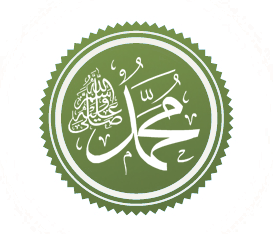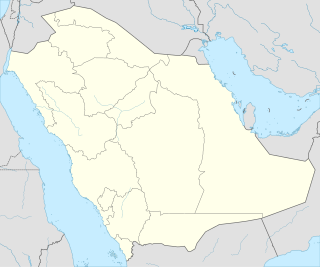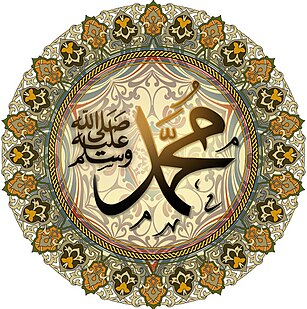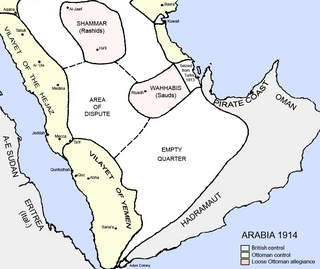
Abu al-Qasim Muhammad ibn Abdullah ibn Abdul-Muttalib ibn Hashim was an Arab religious, social, and political leader and the founder of the world religion of Islam. According to Islamic doctrine, he was a prophet, sent to preach and confirm the monotheistic teachings of Adam, Abraham, Moses, Jesus, and other prophets. He is believed to be the final prophet of God in all the main branches of Islam, though some modern denominations diverge from this belief. Muhammad united Arabia into a single Muslim polity, with the Quran as well as his teachings and practices forming the basis of Islamic religious belief.

Mecca, officially Makkah al-Mukarramah and commonly shortened to Makkah Arabic: مكة, romanized: MakkahHejazi pronunciation: [makːa], is a city and administrative center of the Mecca Province of Saudi Arabia, and the holiest city in Islam. The city is 70 km (43 mi) inland from Jeddah on the Red Sea, in a narrow valley 277 m (909 ft) above sea level. Its last recorded population was 1,578,722 in 2015. The estimated metro population in 2020 is 2.042 million, making it the third-most populated city in Saudi Arabia after Riyadh and Jeddah. Pilgrims more than triple this number every year during the Ḥajj pilgrimage, observed in the twelfth Hijri month of Dhūl-Ḥijjah.

Transport in Saudi Arabia is facilitated through a relatively young system of roads, railways and seaways. Most of the network started construction after the discovery of oil in the Eastern Province in 1952, with the notable exception of Highway 40, which was built to connect the capital Riyadh to the economically productive Eastern Province, and later to the Islamic holy city of Mecca and the port city of Jeddah. With the arrival of petrodollars, the Kingdom of Saudi Arabia has initiated many infrastructure development projects across the country, and the extensive development of the transportation network has followed suit in support of various economic developments.

Medina, officially Al Madinah Al Munawwarah, commonly simplified as Madīnah or Madinah, is the second holiest city in Islam and the capital of the Medina Province of Saudi Arabia. The 2020 estimated population of the city is 1,488,782, making it the fourth-most populous city in the country. Located at the core of the Medina Province in the western reaches of the country, the city is distributed over 589 square kilometers, 293 km2 of which constitutes the city's urban area, while the rest is occupied by the Hejaz mountain range, empty valleys, agricultural spaces, older dormant volcanoes and the Nafud desert.

The Hejaz is a region in the west of Saudi Arabia. The name of the region is derived from a verb ḥajaza (حَجَز), from the Arabic root ḥ-j-z (ح-ج-ز), meaning "to separate," and it is so called as it separates the land of the Najd in the east from the land of Tihāmah in the west. It is also known as the "Western Province" It is bordered in the west by the Red Sea, in the north by Jordan, in the east by the Najd, and in the south by the 'Asir Region. Its largest city is Jeddah, the second largest city in Saudi Arabia, with Mecca and Medina being the fourth and fifth largest cities respectively in the country.
Ummah is an Arabic word meaning "community". It is distinguished from shaʻb, which means a nation with common ancestry or geography. Thus, it can be said to be a supra-national community with a common history.

Hegira is a medieval Latin transliteration of the Arabic word meaning "departure" or "migration," among other definitions. Alternative transliterations of the word include Hijra or Hijrah. The word is commonly used to refer to the journey of the Islamic prophet Muhammad and his followers from Mecca to Medina in the year 622. The Hijrah is also identified as the epoch of the Islamic calendar, which is also known as the Hijri calendar, set to 16 July 622 in the Julian calendar or 19 July 622 in the Gregorian calendar.

Abd al-Muttalib Shaybah ibn Hashim was the grandfather of Islamic prophet Muhammad.

The Grand Mosque seizure occurred during November and December 1979 when extremist insurgents calling for the overthrow of the House of Saud took over Masjid al-Haram, the holiest mosque in Islam, in Mecca, Saudi Arabia. The insurgents declared that the Mahdi had arrived in the form of one of their leaders – Mohammed Abdullah al-Qahtani – and called on Muslims to obey him. For nearly two weeks Saudi Special Forces, advised by French commandos, fought pitched battles to reclaim the compound.
The conquest of Mecca was the conquering of the town of Mecca by Muslims led by the Islamic prophet Muhammad in December 629 or January 630 AD (Julian), 10–20 Ramadan, 8 AH. The conquest marked the end of the wars between the followers of Muhammad and the Quraysh tribe.

The Abraj Al-Bait is a government-owned complex of seven skyscraper hotels in Mecca, Saudi Arabia. These towers are a part of the King Abdulaziz Endowment Project that aims to modernize the city in catering to its pilgrims. The central hotel tower, the Makkah Royal Clock Tower, has the world's largest clock face and is the third-tallest building and fifth-tallest freestanding structure in the world. The clock tower contains the Clock Tower Museum that occupies the top four floors of the tower.

King Abdullah Economic City is a megaproject announced in 2005 by King Abdullah bin Abdulaziz Al Saud, the former king of Saudi Arabia.

Muḥammad ibn ʿAbdullāh ibn ʿAbdul-Muṭṭalib ibn Hāshim, commonly known as Muhammad, is believed to be the seal of the Messengers and Prophets of God in all the main branches of Islam. Muslims believe that the Quran, the central religious text of Islam, was revealed to Muhammad by God, and that Muhammad was sent to restore Islam, which they believe did not originate with Muhammad but is the true unaltered original monotheistic faith of Adam, Ibraham, Musa, Isa, and other prophets. The religious, social, and political tenets that Muhammad established with the Quran became the foundation of Islam and the Muslim world.

Muhammad, the final Islamic prophet, was born and lived in Mecca for the first 52 years of his life until the Hijra. This period of his life is characterized by his proclamation of prophethood. Muhammad's father, Abdullah ibn Abd al-Muttalib, died before he was born. His mother would raise him until he was 6 years old, before her death around 577 CE at Abwa'. Subsequently raised by his grandfather, Abd al-Muttalib, and then his uncle, Abu Talib ibn ‘Abd al-Muttalib, Muhammad's early career involved being a shepherd and merchant. Muhammad married Khadija bint Khuwaylid after a successful trading endeavour in Syria. After the death of Khadija and Abu Talib in the Year of Sorrow, Muhammad married Sawda bint Zam'a and Aisha.

The four holiest sites in Islam are Mecca, Medina, Jerusalem and Damascus. The two holiest sites of Mecca and Medina in Saudi Arabia are directly mentioned or referred to in the Quran. In the Islamic tradition, the Kaaba inside the Masjid al-Haram in Mecca is considered the supreme holiest site, followed by Al-Masjid an-Nabawi in Medina, Al-Aqsa Mosque in Jerusalem and the Umayyad Mosque in Damascus, Syria; these sites are accepted in this order by the overwhelming majority of Islamic sects. In Shia Islam, after the first four sites, the Imam Ali Mosque in Najaf and the Imam Husayn Shrine in Karbala are the holiest sites; both are located in Iraq. For Sufi Muslims, after the first four sites, Mazar Ghous in Baghdad, Iraq, is the holiest site, followed by Data Darbar in Lahore, Pakistan. There are also other sacred sites in Mecca that Muslims performing Hajj visit, namely Mount Arafat and Muzdalifah.

The destruction of heritage sites associated with early Islam is an ongoing phenomenon that has occurred mainly in the Hejaz region of western Saudi Arabia, particularly around the two holiest cities of Islam, Mecca and Medina. The demolition has focused on mosques, burial sites, homes and historical locations associated with the Islamic prophet Muhammad, his companions, and many of the founding personalities of early Islamic history by the Saudi government. In Saudi Arabia, many of the demolitions have officially been part of the continued expansion of the Masjid al-Haram at Mecca and the Prophet's Mosque in Medina and their auxiliary service facilities in order to accommodate the ever-increasing number of Muslims performing the pilgrimage (hajj).

The Zamzam Well is a well located within the Masjid al-Haram in Mecca, Saudi Arabia, 20 m (66 ft) east of the Kaaba, the holiest place in Islam. According to Islam, it is a miraculously generated source of water from Allah, which sprang spontaneously thousands of years ago when Ibrahim's (Abraham's) son ʾIsmaʿil (Ishmael) was left with his mother Hajar (Hagar) in the desert, thirsty and crying. Millions of pilgrims visit the well each year while performing the Hajj or Umrah pilgrimages in order to drink its water.

The Haramain high-speed railway, also known as the Western railway or Mecca–Medina high-speed railway, is a 453-kilometre-long (281 mi) high-speed rail line in Saudi Arabia. It links the Muslim holy cities of Medina and Mecca via King Abdullah Economic City, using 449.2 kilometres (279.1 mi) of main line and a 3.75-kilometre (2.33 mi) branch connection to King Abdulaziz International Airport (KAIA), in Jeddah. The line is designed for a top speed of 186 mph (299 km/h).

The Ottoman era in the history of Arabia lasted from 1517 to 1918. Ottoman degree of control over these lands varied over the four centuries with the fluctuating strength or weakness of the Empire's central authority.
















